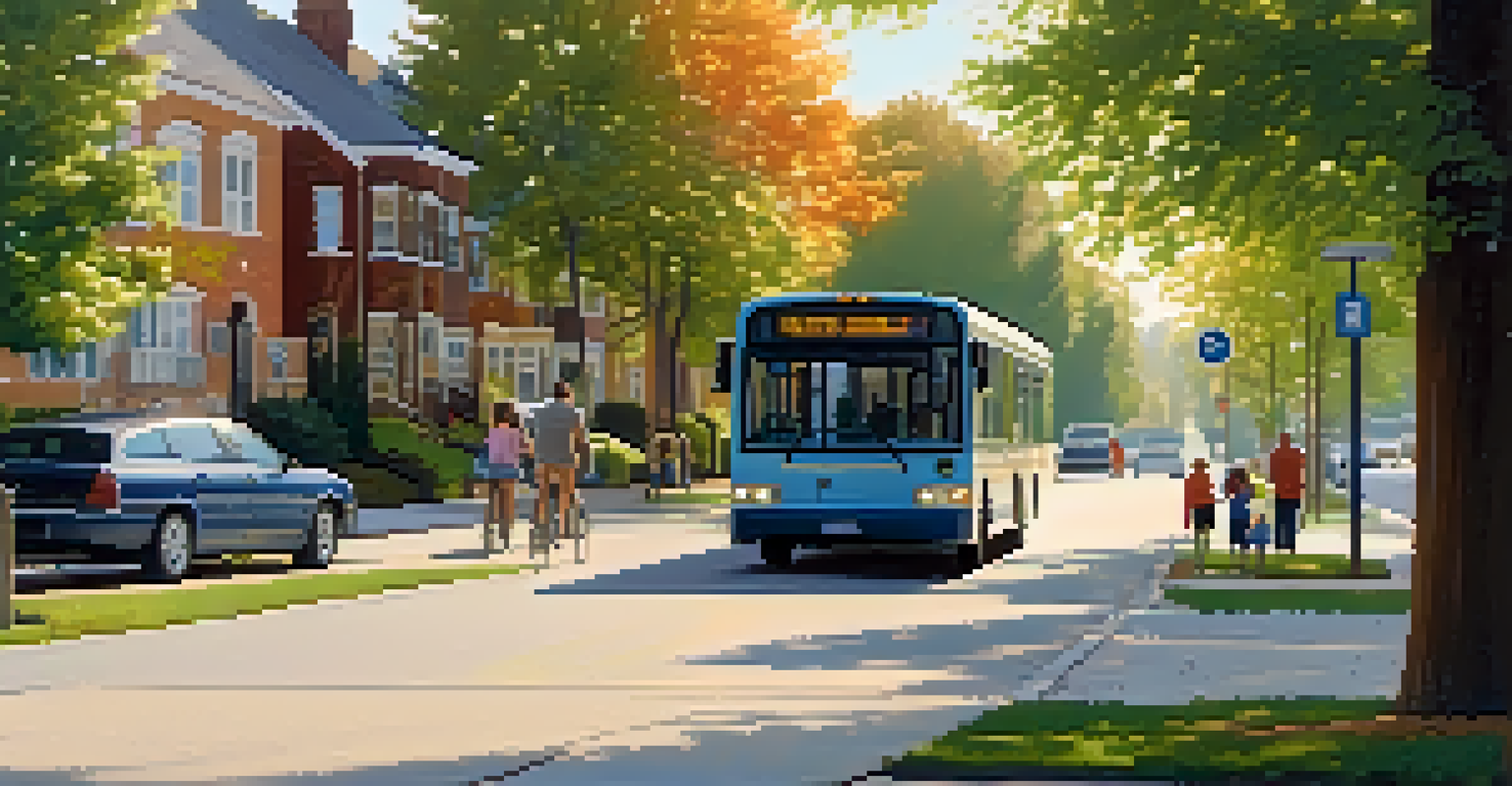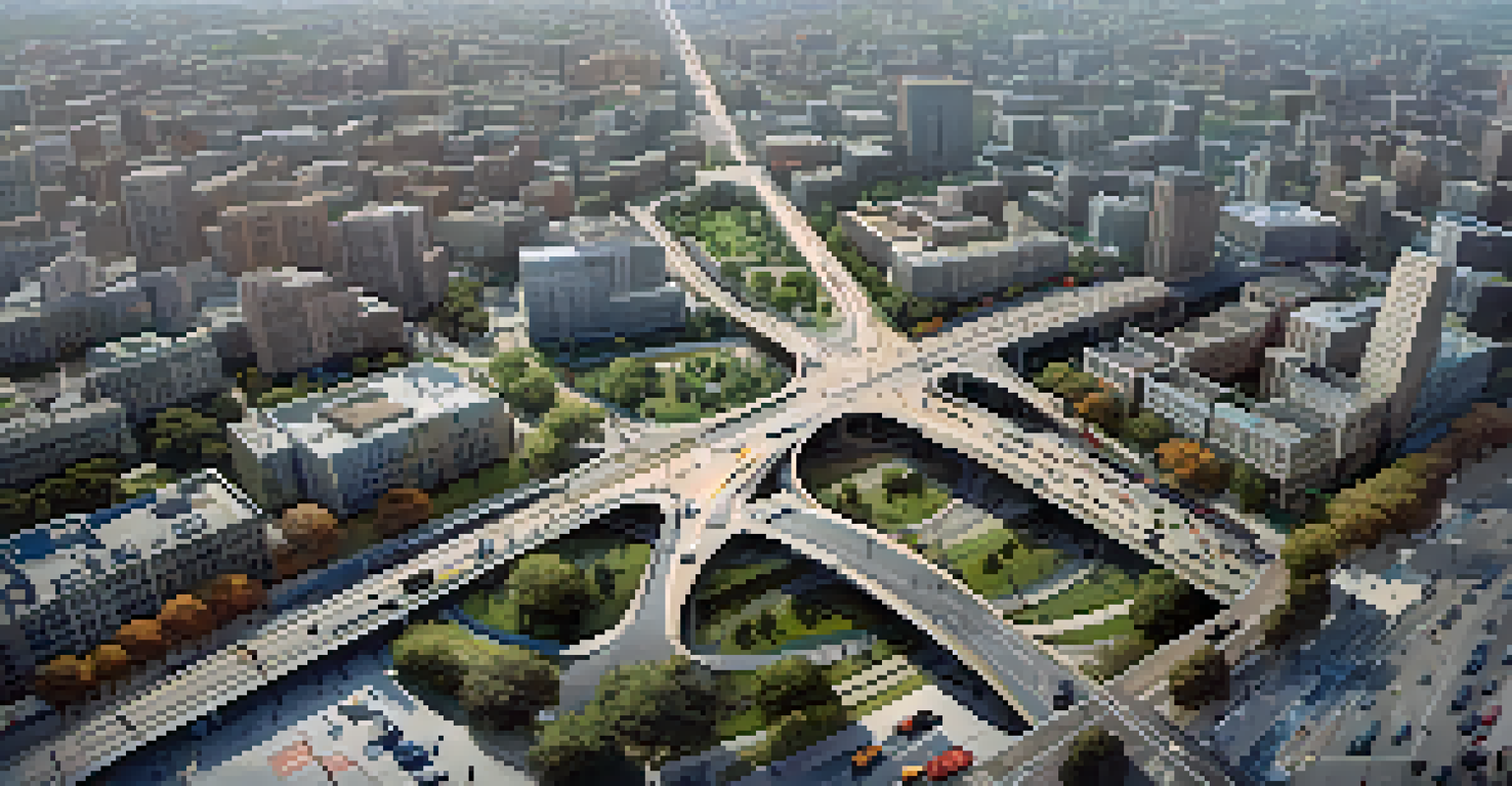Zoning Laws and Their Effect on Public Transportation

Understanding Zoning Laws and Their Purpose
Zoning laws are regulations that govern land use and development within a municipality. They dictate how land can be utilized, whether for residential, commercial, industrial, or agricultural purposes. By establishing these guidelines, zoning laws aim to promote orderly growth and protect the interests of the community.
Zoning laws are a vital tool for shaping the future of our communities, guiding the development that enhances accessibility and supports public transport.
For example, a city might zone an area strictly for residential use, meaning businesses cannot operate there. This can help maintain a peaceful environment for families, but it can also limit the availability of services nearby, which may impact public transportation options.
Overall, zoning laws create a framework that shapes the infrastructure of a city, including how public transportation systems are planned and implemented. When we understand zoning, we can better appreciate its role in our daily commutes.
The Connection Between Zoning and Public Transportation
Public transportation relies heavily on the layout of a city, which is directly influenced by zoning laws. These regulations determine where transit stops can be located, which can either enhance or hinder accessibility for residents. When zoning allows for mixed-use developments, public transport can thrive by connecting homes, businesses, and amenities.

For instance, if a city zones an area for high-density housing near commercial zones, it creates a natural demand for effective public transport routes. This accessibility encourages more people to use transit systems instead of driving, which can lead to reduced traffic congestion and lower emissions.
Zoning Laws Shape City Growth
Zoning laws dictate land use, promoting orderly development and protecting community interests.
Conversely, if zoning restricts development in certain areas, it can create 'transit deserts' where residents have limited access to public transportation. Understanding this connection helps us see the broader implications of zoning on everyday life.
Zoning Laws and Accessibility Issues
Accessibility is a critical concern when it comes to zoning laws, as they can either promote or limit access to public transportation. Areas that are zoned without consideration for transit access may leave vulnerable populations, such as low-income families, with few options for getting around. This can exacerbate inequalities in mobility and limit job opportunities.
The best way to predict the future is to create it, especially when it comes to urban planning and transportation.
For example, a city that zones all its affordable housing on the outskirts, away from public transport routes, can create significant barriers for residents. They might have to rely on personal vehicles or costly rideshares, which isn't feasible for everyone.
Addressing these accessibility issues through thoughtful zoning can create equitable public transportation systems that serve all residents. This is not just a matter of convenience; it's an essential step towards social equity.
How Zoning Changes Can Enhance Public Transport
Cities can make strategic zoning changes to enhance public transportation systems. By rezoning areas to allow for higher density or mixed-use developments, cities can create hubs that attract transit services. This encourages more residents to rely on public transport, ultimately improving the overall efficiency of the system.
For example, a city might decide to rezone an underutilized industrial area into a vibrant neighborhood with shops, parks, and housing. Such changes can lead to the establishment of new transit routes or the extension of existing ones, making it easier for residents to access public transport.
Zoning Impacts Transit Accessibility
Zoning regulations influence public transportation routes and accessibility, affecting residents' mobility.
These proactive zoning adjustments demonstrate how urban planning can be a catalyst for improving public transportation, fostering a more interconnected community.
Challenges Faced by Zoning and Transit Authorities
Despite the benefits of aligning zoning laws with public transportation needs, challenges often arise. Conflicts between zoning regulations and transportation planning can lead to suboptimal outcomes. For instance, zoning policies might prioritize single-family homes, which can limit density and, consequently, the viability of public transport.
Moreover, community resistance to zoning changes can pose significant hurdles. Residents may fear that increased density will lead to overcrowding or changes in neighborhood character, making it difficult for authorities to implement necessary adjustments.
Navigating these challenges requires effective communication and collaboration among stakeholders, including city planners, transit authorities, and the community. Finding common ground is essential for building an integrated and effective public transport system.
Case Studies: Successful Integration of Zoning and Transit
Several cities have successfully integrated zoning laws with public transportation planning, serving as models for others. For instance, Portland, Oregon, has embraced transit-oriented development (TOD), which focuses on creating dense, walkable neighborhoods around transit stations. This approach has significantly increased public transport ridership in the area.
Another example is Chicago, which has implemented mixed-use zoning in various neighborhoods to enhance accessibility to public transport. By allowing residential and commercial developments to coexist, they’ve made it easier for residents to access jobs and services without needing a car.
Future of Zoning Emphasizes Equity
The evolution of zoning laws will focus on sustainable development and equitable access to public transportation.
These case studies highlight how thoughtful zoning can lead to robust public transportation systems that meet the needs of diverse populations. They serve as inspiration for other cities looking to improve their transit networks.
The Future of Zoning Laws and Public Transportation
As cities evolve, so too must the zoning laws that govern them. The future will likely see more emphasis on sustainable development and the integration of public transportation solutions. This means zoning laws will need to adapt to support innovations like bike lanes, electric buses, and shared mobility options.
Furthermore, with the rise of remote work, zoning may need to address changes in residential patterns and their impact on public transport. As people increasingly seek out suburban or rural living, cities will need to rethink how they connect these areas to urban centers.

Ultimately, the future of zoning laws and public transportation will hinge on collaboration, innovation, and a commitment to creating equitable access for all. By prioritizing these aspects, cities can build robust and inclusive transit systems that serve generations to come.